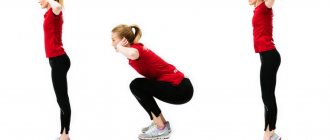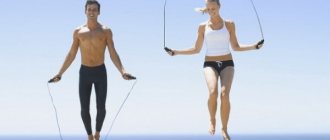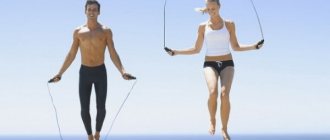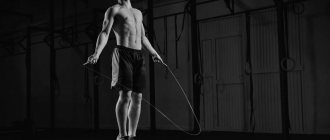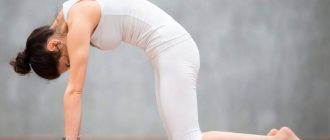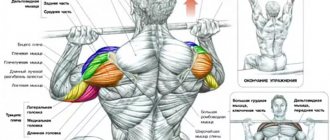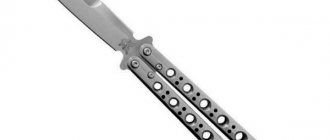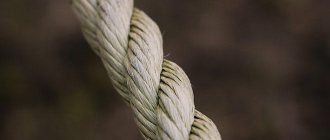Share:
Double jumping rope is one of the most favorite exercises for beginner CrossFit athletes. Every first one tries with great diligence to learn how to make them. And as soon as it turns out, the newcomer experiences a colossal surge of joy - after all, from now on he is no longer a beginner.
Jumping regular single jumps is rarely a problem for any CrossFit athlete, and we probably won’t dwell on this today. But when it comes to spinning the rope twice in 1 jump, most beginners begin to have difficulties. Today we will talk in detail about the technique of double jumping rope, including on video, some interesting statistics about this exercise, as well as its irreplaceable benefits in the training process.
Features of training double jumps
Double jumps are considered a more difficult physical activity than single jumps. You need to have time to twist the cord not once, but several times in one jump. This means a different speed for performing the entire exercise.
Nuances of the execution technique:
- the exercises are suitable for those who have been jumping rope for a long time;
- It is advisable to start training first with single jumps;
- the socks should be straight, the abs and gluteal muscles should be tight;
- choose a cord that is neither too short nor too long (the handles should touch your chest when pulled);
- You shouldn’t suddenly increase the pace immediately, as you won’t be able to properly work out all the nuances of double jumps;
- to perform double jumps, you need to place your feet shoulder-width apart and take a jump rope;
- the handles should be at the level of the middle of the body. It is advisable to keep your knees straight even while moving.
The jump should occur traditionally up and down, and the rope should rotate very quickly, perhaps even with a slight whistle. When bouncing, do not forget about the evenness of the body.
The arms should not be spread too wide; the movement is performed only with the hands. Do not throw your legs forward and do not hit your buttocks with your feet. It is better to concentrate on small, even jumps at a moderate pace.
You can alternate single and double jumps (for example, we jump twice once and a few more times twice). This will help you master the technique faster and make your workout more intense.
High jumps
The peculiarity of this technique is the very high jumping. During the jump, you need to have time to turn the cord several times. Double jumps generally require a little more height than regular jumps.
To master high jumps, you can first try doing them without a jump rope. Once you have mastered the technique of higher single jumps, you can move on to double jumps.
One after three
Jumps are performed on the toes or by pulling the toe towards you when landing. Acceleration of the rope must be done while lowering it.
Alternating a double jump through three single jumps helps to quickly restore your breathing. This is an ideal technique for those boxers who are just starting to master the rope.
Alternation
You can alternate single, double, and triple jumps. This technique is especially effective at the very beginning, when jumping has not yet been practiced.
The load is not as intense as when training with exclusively double jumps. Choose the optimal number of alternations of different types of jumping individually for yourself.
Double Jumps
Classic double jumps work like this: you jump once, but you spin the rope twice.
Training stages:
- Rotating the rope cord in one hand. You don't jump, you just do a double spin with a whistle.
- Performing a high jump without a jump rope and a double slap on the knees with your palm.
- Performing a double jump so that the rope passes under your feet twice, not once.
There are different types of double jumps. They can be done crosswise, in loops, and in other forms of multi-jumps. These are already very difficult exercises that only professionals can do.
The rope for double jumps should reach your chest. It can be any model; it is not necessary to choose a cord for sprinters or professional athletes.
Do not move your arms back, bring them up through the sides and forward again. If it doesn’t work, try repeating the exercise again until you fully master the technique.
Harm and contraindications
Jumping rope, like other types of physical activity, in addition to its benefits, can also cause harm to a weakened body. If you have a number of diseases, after such exercises, joint diseases or bone pathologies may develop, the condition of the cardiovascular system may worsen, or the spine may become bent.
To avoid this, it is necessary to organize the training process taking into account the athlete’s health limitations.
Contraindications to jumping with a rolling pin are:
- diseases of the spinal column (intervertebral hernia, protrusion, etc.);
- dysfunction of the heart muscle;
- blockage of blood vessels;
- varicose veins of 2 and 3 degrees;
- old joint injuries (especially knees);
- high blood pressure;
- pregnancy;
- the beginning of the menstrual cycle (the first 3-5 days of heavy bleeding);
- diagnosed obesity of 2 and 3 degrees (intense cardio exercise with such physical data can lead to overload of the heart and joints, which will negatively affect the overall well-being of the athlete).
Correct starting position
We take a jump rope and choose a place away from people. Keep the body straight. We do not place our legs too wide so that it is convenient to jump. Before starting a challenging workout with double jumps, you need to stretch your muscles.
Hands
The main movement comes from the hand, and secondarily from the forearm. With your thumb, you adjust the scrolling so that the cord does not end up getting tangled under your feet, but flies past with a whistle.
Correct position:
- The arms are pressed to the body, and the hands are slightly extended forward.
- During the landing and push-off phases, arm rotations slow down.
- After the second pass of the rope under your feet, the rotation slows down.
The wrist is the most important thing in double jumps. The forces of the elbows and shoulders are secondary. There should also be no arching in the lower back. The gaze is directed forward. All will is concentrated in the hands.
Training in double jumps begins with lateral scrolling of the rope, first in one hand and then in the other. As soon as the cord touches the floor, you jump. This is how a brush for double scrolling is developed.
Legs
Keep your legs as straight as possible. The jumps may or may not be very high, but we try to keep our knees level. During the jump, slight bending is possible.
The legs should also not protrude too far forward during the jump itself. Land on your toes or midfoot. Keep it light. The legs are involved in this technique no less than the hands and forearms.
General points
We start the warm-up with light single jumps and gradually move on to double jumps. If you are already a pro, then you can immediately start with a complex load.
Don't try to double jump right away, as it won't work and you'll lose interest, and without the right skills, you might get your feet caught on the rope.
If the jump is done correctly, you will hear the cord hitting approximately 30 cm from the beginning of the foot. Scrolling will occur easily and with a whistle from the fast rotation speed.
Don't hold your breath while moving. Otherwise you may faint.
Question to an expert
How to gain the required height to make a double jump?
Try jumping without a rope first or jumping onto a step on a ladder. In fact, you only need to raise the height a little to give the cord time to spin. With singles you jump a maximum of 5 cm, and with doubles a little more. Jumping too low can cause the rope to catch on your feet.
Exercise
This exercise is very effective for increasing leg endurance and developing core muscles. Widely used in all other sports and performed like this:
- Push with both legs, breaking the legs into a jumping form (touching, stepping, etc.);
- When landing with the foot bent at the knee, the knee angle should be 90 degrees;
- The bent knee should not go beyond parallel with the toe of the same foot;
- These stretches can be done alternately with each leg, or several repetitions on one leg.
- You can land after jumping on one knee, softening the landing with your other foot.
Spreaders have a great effect on the hips, buttocks, feet and require a perfectly straight back position.
Rules for performing double jumps
We perform 10-50 single approaches, and then move on to double ones (the number is the same).
Basic rules of execution:
- pull your toes up when jumping;
- keep your back straight;
- breathe evenly (without holding your breath);
- don’t throw our heads back;
- At first we jump very slowly and without faltering.
If you cannot keep your elbows close to your body, you can use tourniquets. In this case, your arms will be firmly fixed and you will not be able to spread them too wide.
To master the technique, it is advised to first do two singles, then one double. The pace of execution is as slow as possible. Then we do three doubles in a row with constant stops and short pauses.
If you stop getting lost and can easily do doubles, start working on the number of jumps. For example, you can use the “staircase” technique: from 10 to 50 double jumps in a row. For every mistake, we start over. This is how technique and speed of execution are developed.
If you want to learn how to do double jumps, you will find this video helpful:
Criteria for choosing the right jump rope for cross-training
We talk about four criteria that are taken into account when choosing a high-speed jump rope.
Material
Beginner athletes are better off using a jump rope with a rubber or foam cord. These materials are durable and tangle-free. We advise more experienced athletes to choose a thin steel rope. It will spin faster and you will be able to train at high intensity.
Pens
Choose an ergonomic grip to make it easier to rotate the rope. Manufacturers try to make the handles as light and non-slip as possible.
Bearings
Ball bearings in the handles make the rope rotate incredibly quickly.
Length
The size of the speed rope is adjusted with a special tool included in the kit. You can determine the size like this: stand in the middle of the cord and raise your arms along your body. If the rope is tight and the handles are in the armpits, then the length of the rope is appropriate.
Watch our video tutorial on adjusting the length of a speed rope:
Basic double jump rope technique
Double jumps can be mastered in 1-2 weeks. The main thing is constant practice. They can be alternated with single ones and used in warming up before entering the boxing ring.
First stage: single jumps
We start the training with single jumps. You must do them without errors - easily and freely. Do not collapse your body or bend your knees too much.
You usually start double jumps if you have already learned how to do single jumps at least 50-100 times during the warm-up. Some trainers require at least 200 bounces.
Stage two: try doubles
After mastering singles, we proceed to doubles. The rope should jump twice due to the correct and intense efforts of the hands, and not a high jump or pulling the knees towards the chest.
Technique:
- Take a jump rope and jump.
- Make two spins while flying up.
- Gently land on the floor and repeat.
The first revolution is done at a normal pace, but the second time you need to speed up. Otherwise the rope will get caught. Then you will not be able to double jump and may even trip.
The rope should only fly over you when you are at the highest point. Try to maintain the correct pace at all times.
Learn more about the basic double jump technique:
Third stage: final
First you jump and then speed up the scrolling pace. On the contrary, there is no need to do it. You will quickly become exhausted, and you will not have enough strength for the second spin. Land without flopping or unnecessarily straining. Maintain the found breathing rate while repeating double jumps.
At the initial stage, try to do 5-10 double jumps. Over time, their number can be increased to 50-100.
Preparing for skipping
Jumping rope (the benefits are achieved only if all recommendations related to the organization of the training process and the execution of the exercise are followed) require careful preparation from the athlete.
Choosing a jump rope
When choosing a jump rope, it is recommended to familiarize yourself with the features of each of the 4 main types of sports equipment in question:
| Type of jump rope | Short description |
| Jump rope with weights | Suitable for people with good physical fitness. It is distinguished by its greater mass in comparison with traditional analogues, which complicates the performance of habitual loads. |
| Express | Recommended for use in fat burning training. Thanks to the ergonomic shape and lightweight material used in the production of the jump rope, it allows you to make more jumps in 1 minute compared to other analogues. |
| With built-in calorie burn counter | Used for fat burning training. The “smart” jump rope, after entering the athlete’s initial parameters, will independently calculate the amount of calories that must be eliminated during each session for effective weight loss. |
| Classic jump rope | It is a rubber cable with plastic handles. |
Considering that the ease of use of a jump rope is directly affected by its length, you should choose sports equipment in accordance with the generally accepted algorithm compiled by experienced fitness trainers.
Algorithm:
- Take the handles of the jump rope.
- Straighten your back.
- Stand with your feet on a part of the rubber cable lying on the floor.
- Raise your hands up. If the length is suitable for a particular person, then the maximum arm height will be opposite the armpit area.
Choice of clothes
For skipping, you should choose clothes according to the following criteria:
- wardrobe items should be as tight as possible;
- there should be no additional elements on the T-shirt or sweater (frills, ruffles, fabric inserts, etc.);
- the bra should support the breasts well (otherwise, jumping with a rolling pin can cause sagging breasts or the appearance of stretch marks);
- shoes should be elastic, soft, with non-slip soles that tightly secure the ankle;
- Jumping barefoot is not recommended, since the sole of properly selected shoes reduces the load on the joints and spine, and its absence can provoke injuries of varying complexity.
Where is the best place to study?
You can jump rope in any environment if it meets the key safety requirements:
- the floor or other supporting surface should not be slippery;
- there should be no foreign objects or people within a radius of 10 m;
- the supporting surface should be smooth, without objects that impede the movement of the lower extremities (grass, stones);
- the ambient air temperature should be no higher than 22 degrees Celsius (since jumping rope is considered a high-intensity training, performing it in hot conditions can lead to rapid dehydration, loss of consciousness or other discomfort);
- there should be a minimum of distractions around the athlete (concentration on performing the exercise increases the effectiveness of working out all the muscle groups involved).
Benefits of double jumping rope
Double jumps are a difficult technique. Having mastered it, the boxer will improve his concentration and also increase his endurance. Excess weight, if any, will definitely be reduced, since jumping is considered a heavy load.
The main advantages of double jumps:
- pumping the calf and gluteal muscles;
- development of the hands (especially the hands and forearms);
- intense calorie burning.
To perform a double jump, it is very important to be able to balance and maintain balance. These are key skills for a boxer or other wrestler. In addition, all muscles are pumped evenly. It has been noticed that the abs are worked out perfectly and with long-term training you can hope for “six packs”.
Double jumps are included in all boxers' warm-ups. They are often alternated with other types of jumps. This ensures you get a top-notch cardio workout before entering the ring.
When will the first results appear?
The speed at which positive changes in an athlete’s appearance are achieved depends on a number of external factors:
- correct execution of exercises with a skipping rope;
- initial parameters of the human body;
- regularity of skipping activities;
- compliance with the principles of proper nutrition (features of the diet are determined by the goal set by the athlete).
If all recommendations are followed, the first results will become noticeable after 1 month. regular training. The athlete will feel an improvement in his psychological state and see that his body has become more flexible and resilient.
Jumping rope is one of the most effective ways to quickly improve a person's athletic fitness.
The benefits of such sports activities are explained by the combined focus of physical activity of the type in question. The main advantage of skipping is its versatility and the minimum number of contraindications.
Jumping exercises for weight loss - how to choose
For the convenience and effectiveness of classes, you need to purchase the right equipment.
Dimensions
For short people (150-165 cm), a jump rope 2.5 m long is suitable; taller people (170 cm or more) should choose a product from 2.7 meters. For those whose height exceeds 180 cm - 3.1 m.
Features of the cord
The product should not be very heavy and bulky, especially if it is intended for a beginner. Models are produced from rubber, PVC or nylon - such materials are characterized by lightness, wear resistance, and are not traumatic. Therefore, they should be preferred to heavier analogues - made of rubberized steel cable or leather.
The weighted product is used by experienced athletes who are not afraid of increasing loads, have good control over the course of the cord, and regulate the speed of jumps. Beginners will quickly get tired of using a heavy rope, so it’s better to stick with a lighter version.
Handle configuration
The most comfortable models are equipped with handles, the manufacture of which takes into account anatomical features. It is also important that the material is non-slip and pleasant to the touch. A projectile with heavy handles is suitable for those who want to create additional stress on their arms and shoulders. But if you are just starting to master skipping, it is recommended to prefer light equipment. Prefer one that has a calorie counter. This way you can navigate details such as the duration and activity of each activity.
How many calories can you burn?
Most people wrongly consider jumping rope to be ineffective in the fight against obesity. It helps you lose weight quickly. During an hour-long workout, a person with an average weight of 65 kg can lose about 800 kilocalories.
This figure is indicative. The exact number of calories lost is directly related to the intensity of your workout. High loads are not suitable for beginners. People who have not previously practiced intense exercise should start with light loads.
When the body muscles fully adapt, jumping movements are performed automatically and the intensity increases. This allows you to fully concentrate on the breathing process, since you no longer have to spend all the time and energy trying to make every movement correctly.
